Table of Contents
Ecommerce brands face a consistent challenge: how to rank for competitive transactional keywords that drive meaningful sales. Category pages, often targeted for non-brand keywords, compete with established players and marketplaces, requiring a sophisticated, multi-faceted SEO strategy. The competition is especially high for firearms companies doing SEO since they're restricted from advertising on search engines.
In this case study, we'll explore how we helped an outdoor ecommerce brand overcome this challenge with a blend of technical and on-page optimizations, resulting in a 95% year-over-year increase in non-brand traffic to category pages. By sharing our approach, we’ll provide actionable insights for Ecommerce brands aiming to drive similar results.
The Challenge: Ranking for Competitive Non-Brand Keywords
For this outdoor ecommerce brand, category pages were key to attracting high-intent users searching for non-brand terms. However, these pages faced several challenges common to ecommerce brands:
- Highly Competitive SERPs: Dominated by marketplaces and established brands, the search landscape for non-brand keywords was particularly tough to crack.
- Resource-Intensive Optimizations: Implementing technical and on-page changes across a large number of pages required significant coordination and effort.
- Balancing SEO and UX: Content improvements had to drive rankings without compromising page speed or user experience.
To achieve meaningful growth, we needed a holistic strategy that addressed these pain points and aligned technical and on-page efforts.
The Solution: A Multi-Faceted Approach to PLP Optimizations
1. Targeting High-Value Transactional Keywords
Our first step was a comprehensive keyword research initiative. We identified high-value, transactional keywords that aligned with each unique category page. Using these insights, we optimized meta titles and H1 tags to match search intent and improve keyword targeting. Lastly, keyword identification is only half the battle. We also ensured that our category pages used clicked-enticing call-to-actions that also called out the benefits unique to each category.
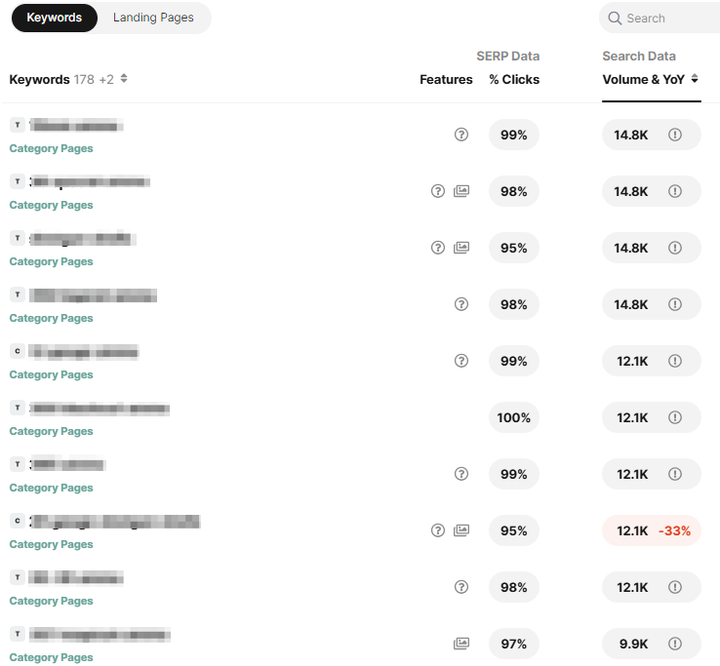
2. Crafting Engaging On-Page Content
To boost relevance and user engagement, we added concise, informative intro copy above the product grid. This ensured visitors immediately understood they’d landed on the right page, improving both SEO performance and conversion potential.
Engaging on-page content is critical for SEO because it helps improve user engagement and time spent on the page; which sends positive engagement signals to search engines. Well-optimized content bridges the gap between user expectations and search engine requirements. And for ecommerce brands, striking a balance can significantly improve visibility and performance in competitive SERPs.
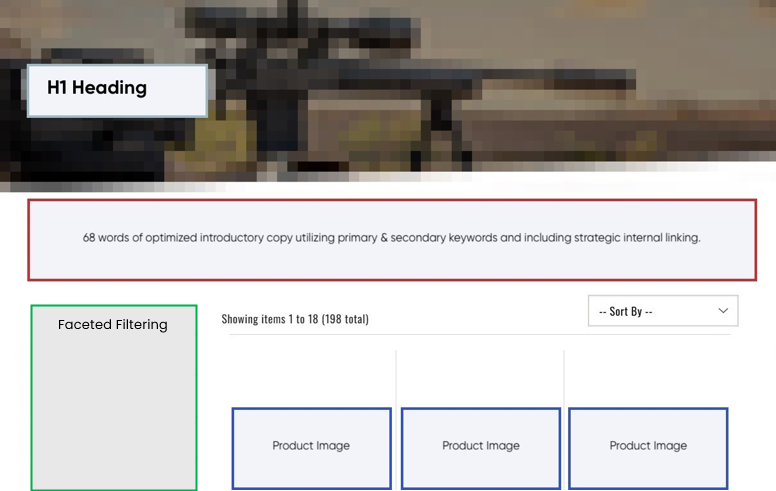
3. Leveraging Schema Markup for Context
We implemented Organization, Breadcrumb, and CollectionPage schema markup to provide search engines with better context. This helped index and rank the most relevant pages, enhancing visibility for targeted keywords.
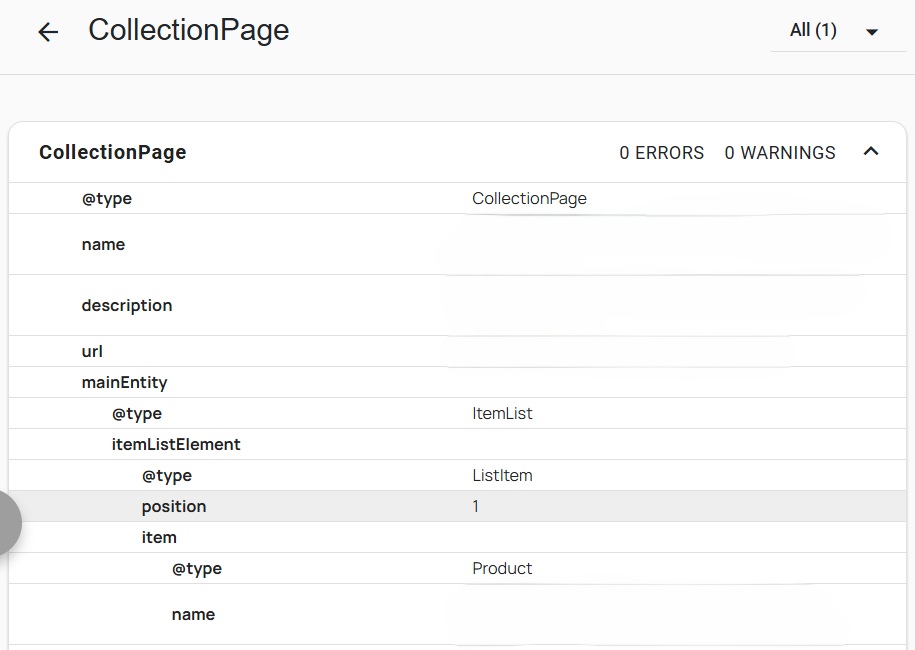
4. Removing Duplicate and Thin Content
Duplicate or thin content can dilute SEO equity. By auditing existing pages and removing underperforming content from Google’s index, we concentrated authority on priority category pages, improving their performance.
5. Reclaiming Backlink Equity
Lastly, we reclaimed valuable backlink equity by identifying retired pages with backlinks. Setting up 301 redirects to category pages ensured this link authority wasn’t lost but contributed to improved rankings and increased the amount of unique referring domains.
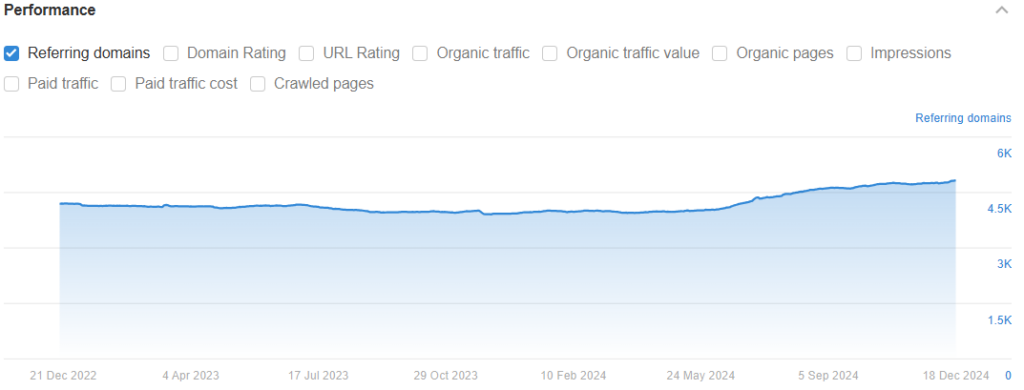
The Results: A Remarkable SEO Transformation
As a result of these efforts, we helped this brand achieve significant growth in its category page performance:
- 95% Increase in Non-Brand Traffic: Over a three-month period (September - November), non-brand traffic to category pages nearly doubled year-over-year.
- 100% Growth in Non-Brand Impressions: Search visibility for category pages soared, driving more opportunities for high-intent clicks.
- 28% More Ranking Keywords: The total number of ranking keywords expanded, further solidifying the brand's position in competitive SERPs.
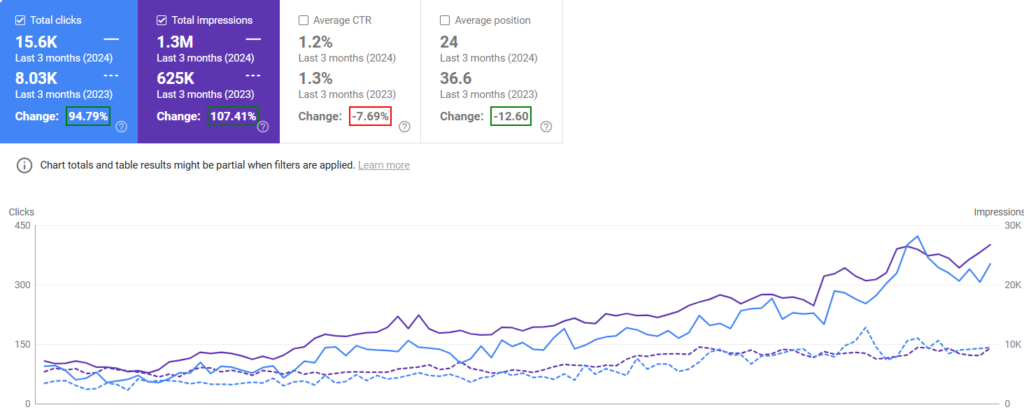
Ready to Drive More Sales Through SEO?
Ecommerce companies like yours can benefit from a strategic approach to SEO that combines technical excellence with engaging content. If you’re looking to boost visibility for your category pages and drive more sales, we’re here to help. Book a consultation today to learn how we can tailor these strategies to your brand.

